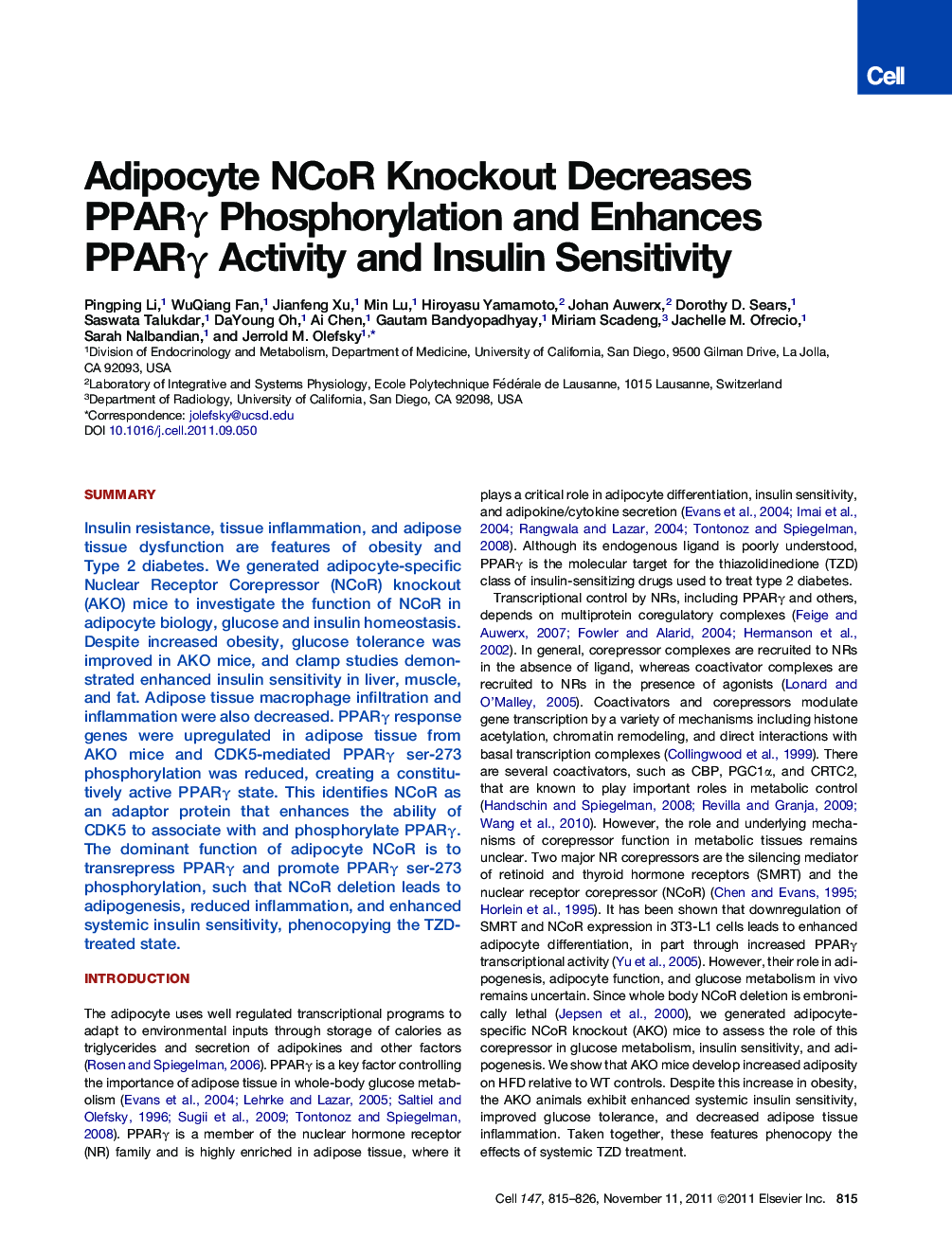| کد مقاله | کد نشریه | سال انتشار | مقاله انگلیسی | نسخه تمام متن |
|---|---|---|---|---|
| 2035724 | 1072214 | 2011 | 12 صفحه PDF | دانلود رایگان |

SummaryInsulin resistance, tissue inflammation, and adipose tissue dysfunction are features of obesity and Type 2 diabetes. We generated adipocyte-specific Nuclear Receptor Corepressor (NCoR) knockout (AKO) mice to investigate the function of NCoR in adipocyte biology, glucose and insulin homeostasis. Despite increased obesity, glucose tolerance was improved in AKO mice, and clamp studies demonstrated enhanced insulin sensitivity in liver, muscle, and fat. Adipose tissue macrophage infiltration and inflammation were also decreased. PPARγ response genes were upregulated in adipose tissue from AKO mice and CDK5-mediated PPARγ ser-273 phosphorylation was reduced, creating a constitutively active PPARγ state. This identifies NCoR as an adaptor protein that enhances the ability of CDK5 to associate with and phosphorylate PPARγ. The dominant function of adipocyte NCoR is to transrepress PPARγ and promote PPARγ ser-273 phosphorylation, such that NCoR deletion leads to adipogenesis, reduced inflammation, and enhanced systemic insulin sensitivity, phenocopying the TZD-treated state.
Graphical AbstractFigure optionsDownload high-quality image (302 K)Download as PowerPoint slideHighlights
► Adipocyte-specific NCoR knockout leads to derepression of PPARγ
► NCoR deletion decreases CDK5-mediated phosphorylation of PPARγ at serine 273
► NCoR is an adaptor protein for CDK5-PPARγ association and ser 273 phosphorylation
► PPARγ derepression leads to insulin sensitivity and decreased inflammation
Journal: - Volume 147, Issue 4, 11 November 2011, Pages 815–826